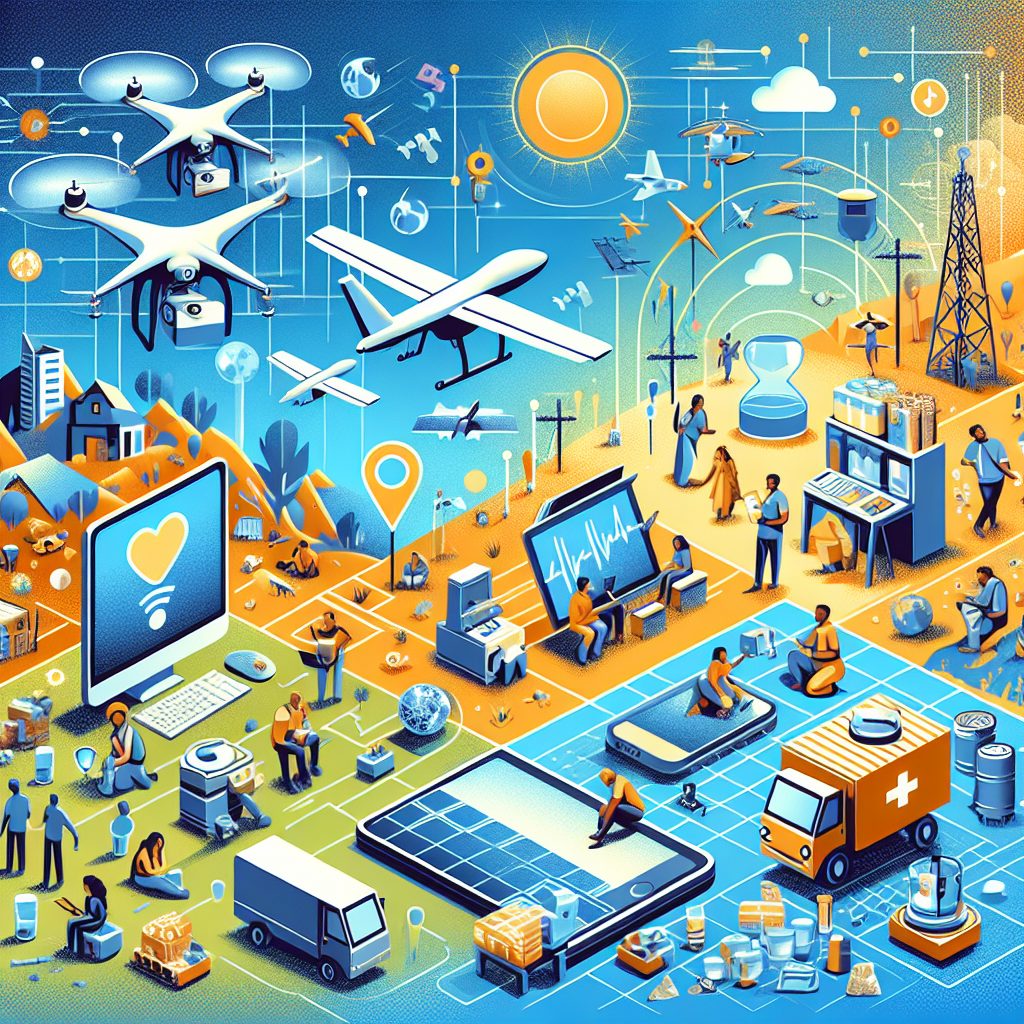Introduction
In recent years, technology has rapidly transformed various sectors, and humanitarian aid is no exception. The fusion of technological advancements with humanitarian efforts has revolutionized how aid is delivered, managed, and monitored. This article delves into the integral role of technology in enhancing humanitarian aid, focusing on its applications in disaster response, resource allocation, and sustainable development initiatives.
Disaster Response
Early Warning Systems
One of the most significant contributions of technology to humanitarian aid lies in the development of early warning systems. These systems utilize advanced data collection and analysis tools to forecast natural disasters, providing crucial lead time for evacuation and preparation. By leveraging satellite imagery, weather models, and machine learning algorithms, organizations can predict events like hurricanes, earthquakes, and floods with increased accuracy.
Real-Time Communication
During crises, timely communication is paramount. Technologies such as mobile networks and satellite communication enable instant connectivity in regions where traditional infrastructure may be compromised. Social media platforms and mobile applications allow affected populations to communicate their needs, facilitating prompt and targeted assistance.
Geospatial Technologies
Geospatial technologies, including Geographic Information Systems (GIS) and remote sensing, play a vital role in disaster response. These tools offer real-time mapping of affected areas, enabling responders to prioritize regions in need and deploy resources efficiently. Drones equipped with cameras and sensors can assess damage, locate survivors, and deliver essential supplies to inaccessible areas.
Resource Allocation
Blockchain Technology
Blockchain technology is emerging as a game-changer in the humanitarian sector, particularly for resource allocation. By employing blockchain, organizations can ensure transparency, security, and traceability in the distribution of aid. This technology reduces fraud, streamlines transactions, and ensures that resources reach their intended recipients.
Big Data Analytics
Big data analytics enable humanitarian organizations to process vast amounts of information quickly and accurately. By analyzing data from various sources, including social media, satellite imagery, and ground reports, organizations can gain insights into the needs and locations of affected populations. This data-driven approach supports informed decision-making and efficient resource management.
Supply Chain Management
Effective supply chain management is crucial for delivering humanitarian aid. Technology enhances supply chain processes through automation, real-time tracking, and predictive analytics. For instance, RFID (Radio-Frequency Identification) tags and GPS tracking systems allow organizations to monitor the movement of goods, ensuring timely and accurate delivery.
Long-Term Development Initiatives
Digital Education Platforms
In the aftermath of crises, education often suffers. Digital education platforms provide a viable solution by offering remote learning opportunities to displaced and marginalized communities. Interactive online courses, educational apps, and e-books enable continuous learning, fostering resilience and empowerment.
Telemedicine
Healthcare access can be severely limited in crisis-affected regions. Telemedicine bridges this gap by connecting patients with healthcare professionals through video conferencing, mobile apps, and remote diagnostics. This technology ensures that even in remote or unsafe locations, individuals receive essential medical care and consultations.
Renewable Energy Solutions
Access to energy is a fundamental requirement for rebuilding communities. Renewable energy solutions, such as solar panels and wind turbines, provide sustainable and reliable power sources. These technologies support the functioning of healthcare facilities, schools, and shelters, contributing to the long-term recovery and development of affected regions.
Challenges and Future Directions
Despite the immense potential of technology in humanitarian aid, several challenges persist. Issues such as digital divide, cybersecurity threats, and data privacy must be addressed to ensure the effective and ethical application of technological solutions. Collaboration between governments, NGOs, and the private sector is essential for overcoming these challenges and harnessing the full potential of technology in humanitarian efforts.
Conclusion
Technology continues to play a transformative role in humanitarian aid, enhancing the efficiency and effectiveness of disaster response, resource allocation, and long-term development initiatives. By embracing innovative technologies and addressing associated challenges, the humanitarian sector can better serve vulnerable populations and build a more resilient world.

